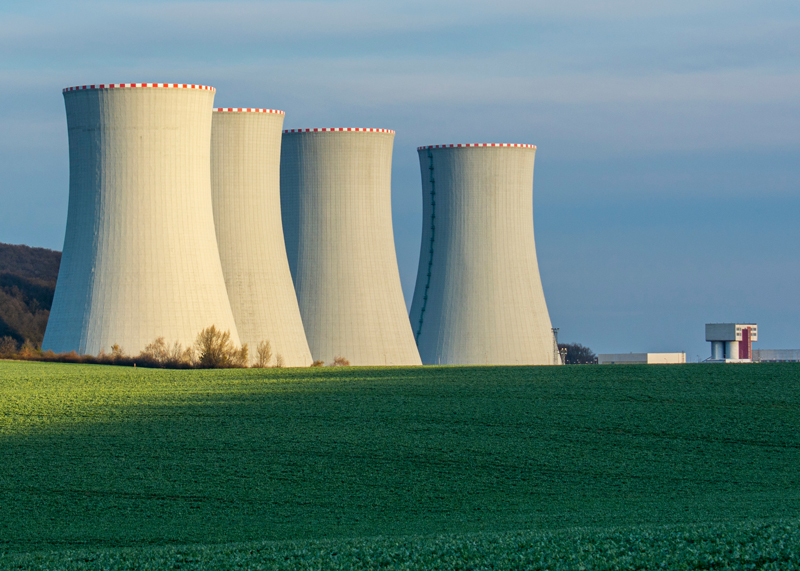Electromagnetic Pulse (EMP) events, whether natural or man-made, have garnered increasing attention due to their potential to disrupt not only the energy sector but also critical infrastructure across various sectors.
The United States government classifies critical infrastructure into 16 sectors, all of which are interconnected in today’s highly digitally interconnected world. While much focus has been placed on safeguarding the energy grid against EMP events, it is important for stewards of public assets to recognize that the repercussions of an EMP event would extend far beyond the energy sector, affecting nearly all aspects of societal functioning.
The Interconnected Nature of the Nation’s Infrastructure
To understand the full scope of the vulnerability of critical infrastructure to EMP events, we must appreciate the interconnectedness of these sectors. A significant pulse event that disrupts the electric grid and sensitive electronics can trigger cascading effects, leading to widespread failures in the following sectors:
Communications
The communications sector is heavily reliant on electronic devices and networks. EMP-induced damage to telecommunication infrastructure , including cell towers, satellites, and data centers, could result in a breakdown of information dissemination, hampering emergency response efforts and public communication.
Water and Wastewater Systems
Water treatment facilities, pumps, and purification systems rely on electronic controls. The loss of power or damage to these systems can compromise access to clean water, sanitation, and public health.
Transportation
The transportation sector encompasses aviation, rail, maritime, and road networks — all of which are heavily reliant on electronic navigation, control, and communication systems. An EMP event could disrupt transportation networks, leading to logistical challenges and emergency response delays.
Emergency Services
Law enforcement, fire departments, and emergency medical services depend on communication and information systems for coordination and response. Disruptions in these systems can hinder their ability to provide timely assistance during crises.
Healthcare
Hospitals and healthcare facilities rely on electronic medical records, diagnostic equipment, and communication systems. An EMP event could compromise patient care, especially in critical situations.
Financial Services
The financial sector operates on a foundation of electronic transactions, data storage, and communication. An EMP event could disrupt financial markets, banking services, and critical economic functions.
Food and Agriculture
The agriculture sector utilizes electronic systems for irrigation, machinery, and distribution networks. EMP-induced failures could disrupt food production and distribution, leading to potential shortages.
Government Operations
Government functions, including public safety, transportation, and healthcare, rely on interconnected electronic systems. Disruptions could impact the government’s ability to provide essential services and maintain public order.
Chemical and Hazardous Materials
Facilities handling hazardous materials use electronic control systems for safety and containment. EMP-induced failures could pose environmental and safety risks.
Commercial Facilities
Shopping malls, office buildings, and other commercial facilities rely on electronic security and building management systems. An EMP event could compromise security and disrupt daily operations. Corporate-owned infrastructure may also have a large impact on recovery efforts in the aftermath of an EMP.
Dams and Water Control Systems
Dams and reservoirs use electronics for flood control and water management. Failures in these systems could lead to flooding and infrastructure damage.
Defense Industrial Base
The defense sector relies on advanced electronics for weapon systems, communication, and surveillance. EMP events could undermine national defense capabilities.
Nuclear Reactors and Materials
Nuclear power plants use electronic controls for safety and operations. EMP-induced failures in these systems could pose significant nuclear risks.
Information Technology
The IT sector, which supports critical infrastructure, is also vulnerable. Data centers , cloud services, and the internet infrastructure comprise the relay system for various sectors and can be seriously impacted by EMP events across an entire distributed network.
Transportation Security
Airports and transportation hubs utilize electronic security systems for screening and safety. Failures in these systems could compromise security measures and further complicate resumption of air, marine, and rail service.
Mitigating the Risk
Given the multifaceted vulnerability of critical infrastructure to EMP events, it is imperative to adopt a multi-pronged approach to mitigation.
- Hardening Infrastructure: Critical infrastructure components should be designed and retrofitted with EMP-resistant materials and shielding to minimize susceptibility to EMP effects. New technology, like medium- and low-voltage filters from TSS USA Manufacturing, can stunt the excessive charge from cabling before it reaches transformer equipment or important electronic installations.
- Redundancy and Resilience: Developing redundancy and resilience in interrelated critical systems can help them maintain functionality even when some equipment becomes disabled. Backup power sources, redundant communication pathways, and failover mechanisms can help maintain functionality during EMP events.
- Education and Training: Personnel across sectors should be trained to respond effectively to EMP-induced disruptions. Emergency response plans should anticipate EMP scenarios.
- Monitoring and Detection: Implementing monitoring systems that can detect anomalies indicative of EMP events can facilitate rapid response and mitigation.
- Public Awareness: Raising public awareness about EMP risks and encouraging preparedness at the individual and community levels is essential.
- Research and Innovation: Continued research and innovation in EMP mitigation technologies and strategies are vital to stay ahead of evolving threats.
Preventing a Polycrisis
Although the immediate connotation of electromagnetic events is their effects on the electric grid and electronics, the vulnerability of critical infrastructure to EMP events extends far beyond the energy sector.
A descriptive term for the aftermath a pulse event would be a polycrisis — in essence, a complex scenario where a combination of various problems converge, making it particularly challenging to address or manage. Our typical means of coping with one system failing relies on other systems to correct the situation. Several sectors of infrastructure failing at once could produce governmental paralysis and a quickly devolving national disaster.
This prospect underscores the need for comprehensive mitigation efforts in many different sectors. The potential consequences of EMP-induced disruptions, like any other natural disaster or military threat, require an appropriate measure of preparedness, resilience, and collaboration across sectors. With awareness of the intricate web of dependencies among critical systems, we can work toward a more secure and resilient future in the face of evolving threats.
For insight into technologies that protect against EMP damage, see the whitepaper from TSS USA Manufacturing.





